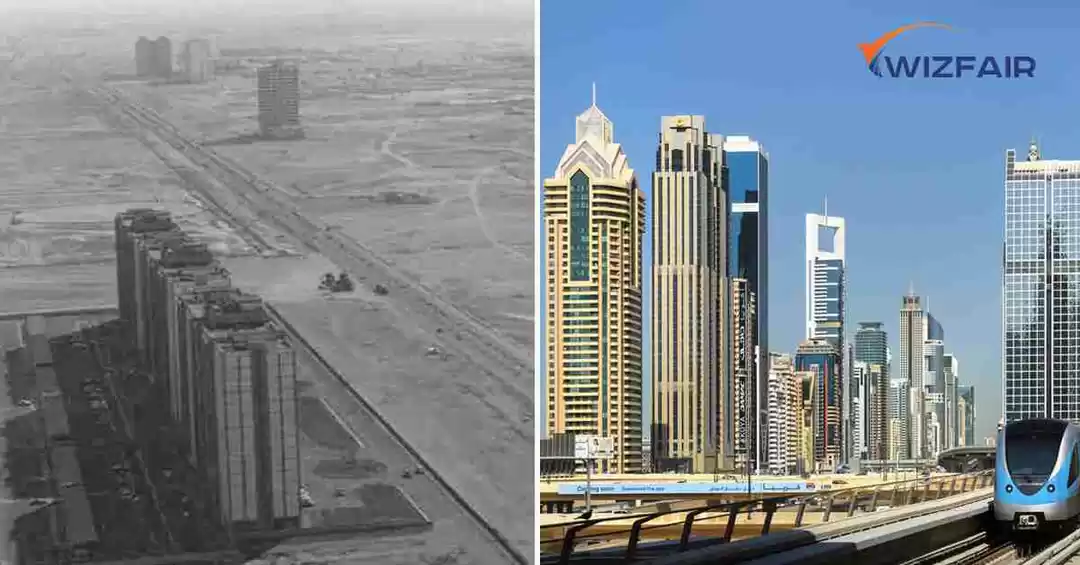Sharjah is the third largest of the seven Emirates which form the United Arab Emirates. Sharjah was once part of a single emirate along with Ras Al Khaimah ruled by the Al Qawasim family.

Under the able guidance of H.H. Sheikh Sultan bin Mohammed Al Qassimi, Sharjah has made rapid progress. Today, it is known as the Cultural capital of the U.A.E. In 1971, the discovery of the Mubarak oilfield near the island of Abu Musa changed the fortunes of the emirate. In 1981, after Mubarak's reserves started dwindling, Saja's onshore gas and liquid gas field was discovered, and gave a further boost to its revenues.

Sharjah was also the first port in the entire middle east to possess fully equipped container facilities. Its massive and very impressive Port at Khorfakkan, provides important facilities for ships that do not need to enter the Gulf.
Over the years, Qawassim became stronger and Sheikh Sultan bin Saqr bin Rashid Al Qasimi became the Sheikh of Sharjah in 1804. British influence continued on Sharjah with some turbulent years in between. In 1971, Sharjah became a founder member of United Arab Emirate and next year oil was struck here. This propelled enormous growth of the Emirate that is visible today in the wealth the place has acquired.

The population was small and people relied on trade and sea faring in addition to, farming, hunting, fishing and pearling. Many of the early settlements were based around the 'falaj', a man-made underground water course.
From the 16th century onwards, times were turbulent. In 1507, the Portuguese savagely took command of the East Coast in order to establish control of the spice trade. They built forts at Khor Fakkan, Kalba and Dibba and their reign lasted a century till the Dutch gained supremacy for the same reason.
By the 17th century the British arrived and began trading with the Qawassim, the forefathers of today's ruling family. The Europeans favored the Gulf and the Red Sea as principal routes of communication between the Mediterranean and India.
In the 18th century, the ruling Qawassim tribe became the mighty seafarers who created an important maritime power in the southern Gulf. Their strongholds were based in Ras Al Khaimah and Sharjah. Sheikh Sultan bin Saqr bin Rashid Al Qassimi, the patriarch of today's rulers became the Sheikh of Sharjah in 1804 and governed for over 50 years.
By the turn of the century relationships between the Qawassim and the British deteriorated. As documented in 'The Myth of Arab Piracy in the Gulf', H.H. Dr. Sheikh Sultan bin Mohammed Al Qassimi, member of the Supreme Council and Ruler of Sharjah, has shown, that whilst the British blamed all the attacks on their ships on the Qawassim, the latter were often blamed for the other's misconduct.
In 1809, the British mounted their initial land based attack on the Qawassim in Ras Al Khaimah. By 1820, the first of several Treaties of Peace was signed guaranteeing peace at sea and protection of the British against attack for 150 years. The coast became known as the Trucial Oman and the Sheikhdoms as the Trucial States. These names remained from 1853 up until the formation of the United Arab Emirates in 1971.
Whilst the Emirate prospered from trade and pearling, Sharjah had many 'firsts' to its credit during these years of development.
Between 1823 and 1954, Sharjah was the base for Britain's only political representative on the Trucial Coast.
In 1932, a staging post was established by the British Government in Sharjah, for the Imperial Airways flights en route from England to India. This was the first airport in the Emirates and is still in use today, as a main road, not a runway!
At the time of its establishment, the airport was located two miles across the desert from the town. All provisions for the air traveler were brought by donkey including the in-flight catering and water from wells. Traders traveled from the town by camel to do business with the foreigners.
The Sheikh's Fort (Al Hisn) was located where Sharjah's modern banking center (Al Boorj Avenue) now stands and Al Arouba Street was used for horse racing.
The importance of the airport helped cushion the collapse of the pearl trade in the 1930's. Sharjah suffered another set back thirty years later when the sea trade also declined due to the silting up of the Creek.
Sharjah remained the regional base for the British RAF and Trucial Oman Scouts until British presence officially ended in 1971 with independence.
In 1953, the first properly organized school in the UAE was established in Sharjah attracting students throughout the country.
Sharjah joined the United Arab Emirates as a founder member on 2nd December, 1971.
In 1972, His Highness Sheikh Sultan bin Mohammed Al Qassimi succeeded as the ruler of Sharjah.
The same year, oil was struck in the Mubarak field, 80 kms offshore, close to the island of Abu Mousa. Two years later production began and at its peak 35,000 barrels were produced per day. A few years later gas condensate was discovered and drilling started in 1990.
This natural wealth combined with the foresight of His Highness Dr. Sheikh Sultan bin Mohammed Al Qassimi has allowed Sharjah to enjoy prosperity and vitality whilst retaining the charms and traditional values of an Islamic city.
Source: http://www.sharjahonweb.com/history.htm
In my Dubai trip I stayed in Sharjah at my relatives house and from here I began one of my most exciting trips .
To know more subscribe to my blog .













